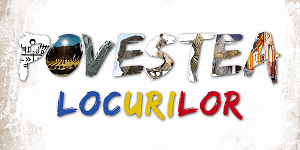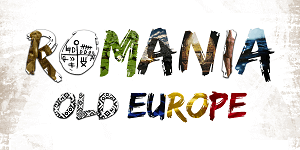Strategic Equity
Scorecard 📊 🎯
B2B Practical Guide to BOS
What is a Strategic Equity Scorecard (for B2B): a Strategic Equity Scorecard is a structured tool that helps a business systematically measure, monitor, and improve equity across internal operations, stakeholder relationships, partnerships, suppliers, product & go‑to‑market practices.
It helps you to: align equity goals with strategy, surface gaps, set targets, track progress over time, hold accountable relevant teams/units.
Your B2B Practical Guide to
Making Rivals Irrelevant 🧠
B2B companies deal with many stakeholders: employees, suppliers/partners, customers (often enterprises), community, governance, etc. Equity issues can affect talent, reputation, supply chain stability, and risk exposure. Regulatory pressures, ESG (Environmental/Social/Governance) expectations are increasing; equity/inclusion are part of what many customers or partners expect. Equity leads to better innovation, decision‑making, more resilient organizations & supply chains.
How to build and use your Scorecard
➤ Making a concrete, trust-building brand promise.
➤ Building brand equity through authentic storytelling.
➤ Positioning yourself uniquely using Blue Ocean principles.
➤ Precisely understanding and targeting your decision maker.
➤ Crafting a clear USP that creates uncontested market space.
➤ Executing a go-to-market strategy aligned with your USP and persona.
➤ Developing a professional visual identity that supports your brand narrative.
The strategic board of a company acts as the ultimate authority and guide, much like a nation brand serves as the overarching umbrella for a country’s economic and soft power B2B initiatives.
Just as the board oversees various corporate functions to enhance shareholder value (e.g., investment, product development, talent acquisition), the strength of a nation brand, through its four segments—Investment, Tourism, Products & Services, and People & Skills—provides the crucial leverage needed to enhance GDP, attract foreign capital, boost exports, and avoid „brain drain,” creating a clear, unified message of success in the global marketplace.
Our ultimate B2B practical guide elevates corporate operations by applying the rigor of a nation brand, encompassing all four strategic pillars: Investment, Tourism (or Business Travel/MICE), Products & Services, and People & Skills.
The strong nation brand, therefore, is the strategic asset whose proper management drives economic growth across all sectors it shelters.
The Nation Brand Scorecard: A Tool for Industry Leaders The Brand Finance Nation Brands Impact™ Framework is a critical strategic scorecard for leaders across the private sector, as its four pillars directly determine a company’s competitive environment, market access, and labor pool.
A. Investment: The Chief
Financial Officer’s View 🎯
This pillar is crucial for companies seeking capital or planning large-scale operations. It matters most to private equity managers, corporate treasurers, and real estate developers. If the nation brand’s Investment score is high, it lowers the cost of borrowing for Financial Services firms and attracts Foreign Direct Investment (FDI) for capital-intensive companies in Infrastructure, Energy, and Advanced Manufacturing. A low score means less domestic capital and higher risk for Tech startups trying to scale.
B. Tourism: The Marketing Director’s Market For any business that sells an experience or relies on movement of people, this pillar is the primary metric.
It is used by marketing directors in the hospitality sector, airline executives, and convention center management. The score determines the flow of customers for Hotel chains and resorts, drives revenue for Airlines and rail operators, and dictates the visibility of Cultural and Entertainment venues (museums, festivals, sports teams) on the global stage.
C. Products & Services: The Export Manager’s Advantage. This pillar is paramount for companies with international sales, as the national brand acts as a seal of approval that can justify premium pricing. It is a daily concern for export managers, brand strategists, and supply chain directors. A strong score directly aids Luxury Goods and Fashion houses, creates demand for high-value Agricultural and Food & Beverage products (e.g., fine wine or specialty coffee), and lends credibility to the international sales of Automotive and Specialized Engineering firms.
D. People & Skills
The HR Director’s Strategic Challenge: this pillar quantifies the availability and quality of talent, making it a key metric for HR directors, university chancellors, and R&D managers. A high score helps the Life Sciences and Pharmaceutical industries attract global researchers and prevents „brain drain” from their R&D departments. It is essential for Digital and Technology Service firms that need to recruit highly-skilled software engineers and specialists internationally to maintain their competitive edge.
Dracula’s Awareness 🧛♂️
vs. Vlad’s Legacy B2B Practical 🎯
Guide to +$36B/yr uncontested equity 🩸
The Irreversible Shift: From Competition to Uncontested Equity. The experience detailed in these posts—from leveraging the historical depth of Vlad’s Legacy over Dracula’s Awareness to positioning European heritage like the Cucuteni culture for sophisticated global buyers—serves as a powerful, practical B2B guide.
Dracula’s Awareness is merely the door; Vlad’s Legacy is the foundational value that unlocks the Blue Ocean. In B2B, the shift from fleeting recognition to measurable, uncontested equity is the only way to capture the $36B/year advantage. B2B Practical Guide by Daniel Roșca
The ultimate lesson is this: in B2B, you don’t grow by competing with rivals; you grow by making them irrelevant ➤ To achieve this, the audience must internalize three core B2B lessons and one critical operational tool.
1. The Blue Ocean Pivot Use awareness as bait, deliver legacy as value. The core strategy, rooted in Blue Ocean principles, is to stop competing on price or common product features. Your brand awareness (like the globally known ‘Dracula’ myth) should serve merely as the gateway. The true competitive advantage—your uncontested market space—is created when you deliver authentic, strategic, and high-value legacy (like the historical figure Vlad or the deep heritage of Cucuteni).
Audience Takeaway: Instead of discarding a known yet superficial asset, learn to strategically re-position it. Your brand promise must transition from being merely known to being credible and irreplaceable. This is how you craft a clear USP that creates uncontested market space.
2. Operationalize Trust
Align Brand Strategy with Business KPI’s. The shift from myth to legacy is not a marketing exercise; it’s a strategic business decision. We learned that to win high-yield B2B contracts (like MICE tourism), brand equity must be defined as commercial reputation—a measurable, reliable assurance of quality and partnership stability.
Audience Takeaway
Every step—from making a concrete, trust-building brand promise to executing a go-to-market strategy—must be measured against unit economics, lead conversions, and contract size, not just vanity metrics. You must speak the language of the CEO and tie authentic storytelling directly to profitable, scalable growth.
3. The Tool for Transformation Deploy the Strategic Equity Scorecard. If you are committed to the Blue Ocean approach and building under the $36 Billion/Year type of brand value potential (as referenced by the national brand equity opportunity detailed below), you cannot measure success using outdated benchmarks. You need a dedicated mechanism to track the non-traditional value drivers of the modern B2B landscape. It helps you align equity goals with strategy by systemically measuring and monitoring success across all stakeholders: governance, employees, partners, and customers.
AUDIENCE TAKEAWAY: to successfully position yourself uniquely and build uncontested market space, you must first precisely measure your internal standing and stakeholder trust. The Scorecard empowers you to do this by turning vague goals into measurable, actionable targets.
Use the Strategic Equity Scorecard to ➤ Surface Gaps: identify where your internal operations or stakeholder relationships fail to meet your authentic brand promise ➤ Set Targets: define quantifiable goals for improvement across talent, partnerships, and governance (e.g., improve employee equity score by 15% in 12 months) ➤ Hold Accountability: assign ownership to relevant teams/units for tracking and improving specific equity metrics over time. This ensures you are building a brand founded on demonstrable, measurable trust, which is the ultimate currency for high-value B2B relationships.
The Strategic Equity Scorecard
is a visionary mechanism 🎯
It helps you align equity goals with strategy by systemically measuring and monitoring success across all stakeholders: governance, employees, partners, and customers. In the context of macro-economy pressures, the Scorecard ensures that your commitment to equity and inclusion leads to better innovation, decision-making, and organizational resilience.
Your B2B Practical Guide & Next Step
The B2B Practical Guide laid out here is clear: Don’t Compete with Rivals, Make Them Irrelevant by moving beyond marketing campaigns and committing to strategic equity. Your brand is not what you advertise; it is the verifiable, trustworthy legacy you deliver to your decision maker.
The Challenge: build your own scorecard.
Based on the insights from this B2B Practical Guide and the upcoming detailed practical examples, your challenge now is to take the definition of the Strategic Equity Scorecard and begin building your own. Map the seven action items: brand promise, authentic storytelling, unique positioning, precise targeting, clear USP, go-to-market alignment, and visual identity. Now assign a measurable metric and an accountability owner to each.
The Test: do your numbers align? Once you have your first iteration of the B2B Practical Guide Scorecard, put your existing B2B strategy to the test. If your current results—in terms of market differentiation, stakeholder trust, or deal value—do not align with the scores you know your brand deserves, it’s time for a deeper, more strategic intervention.
If your Strategic B2B Equity Scorecard reveals a misalignment ➤ don’t hesitate to call us. We specialize in using Daniel Roșca’s Blue Ocean Strategy expertise to reengineering B2B brands for uncontested market leadership and significant financial equity recovery, our practical guide to brand equity route +36 billions of dollars / year.
Don’t Compete with Rivals,
Make Them Irrelevant!
Etichete: B2B Marketing Outsourcing Agency, B2B Strategy™, Balanced Scorecard Romania, Blue Ocean Strategy, Brand Equity Route, CEO, CFO, CMO, Cucuteni, Daniel ROŞCA, Dracula, Europe Genesys, HR, HR Strategic, Innovation















[…] • Scaling B2B Growth in Romania & Europe with industry expertise & local insight → B2B Practical Guide 📞 0758273142 📩 letstalk@b2b-strategy.ro 🧠 Daniel […]
[…] From Constraint (MOLOSO) to LIMITLESS. Let’s TALK […]